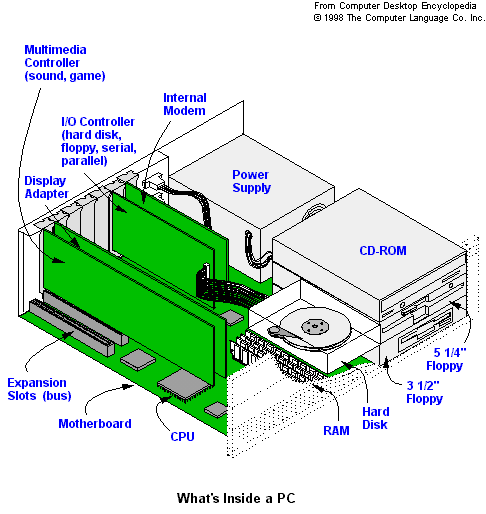
PC
(Personal Computer) Although the term PC is sometimes used to refer to any kind of personal computer (Mac, Amiga, etc.), in general, PC refers to computers that conform to the PC standard originally developed by IBM. PCs are used as stand-alone personal computers or as workstations and file servers in a LAN (local area network). They run under Windows. If an Intel-based PC is used as a server running UNIX or other operating system, it is typically called an Intel-based server, or x86-based server, not a PC.
You can replace floppies, hard disks and video displays, as well as add a scanner, CD-ROM or other device because PC components are interchangeable. Expansion cards are plugged in and out, and an entire motherboard can be replaced with one from a different vendor.
Power SupplyAn electrical system that converts AC current from the wall outlet into the DC currents required by the computer circuitry. In a personal computer, +5, -5, +12 and -12 voltages are generated. The 5 volts are used for the electronic circuitry, and the 12 volts are required for the drives.Fortunately, power supplies usually come preinstalled with the PC case and are standardized between Desktop and Laptop PCs, so you will probably never have to choose between power supplies. Below are a few things to look for in the Powersupply: